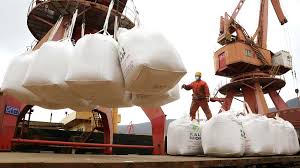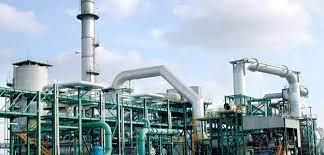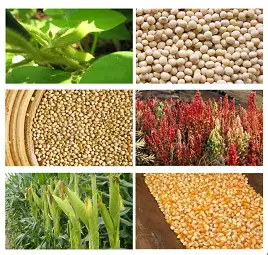The Argentine government has issued a decree that governs the control of the production, import, export, possession, fractionation, distribution, and sale of fertilizers and amendments within the country.

Published on February 17, 2025, the revised standard aims to ensure the quality of fertilizers for the benefit of users, streamline the registration of operators, and remove expiration dates for products. It notably facilitates the import of certified products from countries under high surveillance, including Australia, the United States, New Zealand, the United Kingdom, Brazil, the European Union, and Israel, to avoid procedural redundancies and foster greater commercial integration, as highlighted by the Secretariat of Agriculture, Livestock, and Fisheries, which is responsible for enforcing the updated law.
On security aspects, the Secretariat has introduced a more streamlined process, stating that “a prior notification will now be sufficient for the transport of large volumes of fertilizers containing ammonium nitrate,” a critical measure aimed at minimizing the risks associated with handling such materials. This simplification represents a significant change from previous regulations, which required prior authorization from the National Service of Agri-Food Health and Quality (SENASA), with approvals taking up to 15 days.
The regulation change is part of the broader State Modernization Plan, which promotes the digitalization and simplification of administrative procedures. It also establishes the Secretariat of Agriculture, Livestock, and Fisheries as the enforcement agency that coordinates agricultural production, quality, and health policies and oversees SENASA.
Source: Aduana News
Urea and gas prices — market in transition
Since February 11, TTF ¹ gas has shed almost 20% of its value, driven by rumors of gas storage relaxation and renewed peace talks in Ukraine. Meanwhile, urea prices have stabilized, encountering some resistance. In short, the market took a brief nap.
But are these two factors connected? Not really, beyond a psychological correlation. Gas has become cheaper, yes, but not cheap enough to trigger a wave of additional fertilizer production in Europe. As I’ve said before, the EU is heading toward a structural decline in domestic fertilizer production—regardless of gas price movements.
At the same time, urea prices remain high. The rally we’ve seen has been fundamentally justified, but now the market is sitting at elevated levels. That means it’s time to break the urea market into its key components and analyze them separately.
Russia: A Strengthened Rouble and Competitive Prices
Since the optimistic headlines about peace talks, the Russian rouble has strengthened by about 10%, making domestic urea prices more competitive relative to international markets. This shift is already impacting trade flows.

Europe: Buying Like There’s No Tomorrow
European importers are on a buying spree, stockpiling ahead of potential tariffs on Russian fertilizers. The urgency is so intense that even US products struggle to compete at these price levels. Without revealing exact figures, let’s just say I’m hearing numbers that start with a “5.”…
US: A Slow Catch-Up
The US remains behind its usual purchasing pace. Importers have hit the pause button following a quiet international market and cold weather in key agricultural states. Right now, prices are hovering around $400 per short tonne FOB or $435 per metric tonne CFR.
India: Playing Poker with Imports
All indicators—from recent domestic sales data to production figures—suggest that India will need to import. However, the country continues to delay a much-anticipated tender, maintaining a poker face while the rest of the market watches.
China: A Well-Timed Rumour
Someone started a rumor about a potential easing of China’s export restrictions in March-April, and it worked in favor of domestic producers. Local prices saw a much-needed rally – well deserved, given how tight supply has been.
A Market of Local Battles
What we’re witnessing isn’t a single, unified urea market – it’s a series of regional battles:
⦁ EU vs. Russia: A long-term struggle, with fertilizer tariffs looming.
⦁ AG/Nigeria vs. US: A short but intense price war.
⦁ World vs. India: Waiting for India to make a move.
⦁ China: Standing by, waiting for its moment.
Some of these fights, like the EU’s tariff-driven shift, will shape the market well into the spring. Others, like pricing skirmishes between key exporters, will be fast and furious. Either way, buckle up – this market is far from dull.
¹ The Title Transfer Facility (TTF) is a virtual trading point for natural gas in the Netherlands, serving as the primary benchmark for European gas prices. Established by Gasunie in 2003, the TTF enables gas trading within the Dutch gas network and has grown to become the most liquid gas market in Europe.
Source: Daily Fertilizers

ARGENTINA MAIN CROPS OVERVIEW:

SOYBEANS: As Rainfall recorded during our previous survey has increased the soybean area in Normal/Excellent crop condition at the national level by 1.2 percentage points. Additionally, the central and northern agricultural regions have received water contributions in recent days, although the south continues to experience a lack of soil moisture. Despite this, the area under Adequate/Optimal water conditions has increased by 4.8 percentage points. Nearly 20% of early-planted soybeans are in the grain-filling stage under more favorable water conditions, particularly in both core regions. However, in the central and southern parts of Buenos Aires, more than 50% of early-planted soybeans are going through the critical period under water-deficit conditions, which could compromise their potential yield. On the other hand, over 30% of late-planted soybeans in both core regions have entered the critical period under improved water conditions compared to the beginning of the cycle, helping to mitigate further yield losses. Nonetheless, in the Central-North of Santa Fe and the southern part of the agricultural region, it is crucial to replenish soil moisture to prevent further yield reductions. Under this context, production forecast remains at 49.6 million metric tons.
CORN: Regarding corn, harvesting has been concentrated in the provinces of Santa Fe and Entre Ríos, with initial progress in Buenos Aires. The rainfall has positively impacted late-planted crops, which are in the critical period (VT-R1) in 70.5% of the surveyed cases. As a result, the proportion of fields in Normal to Excellent condition has improved by an estimated 2.1 percentage points, halting the deterioration observed in January and early February. On the other hand, mid-season plantings, sown between mid-October and early November, have been the most affected by water deficits and high temperatures during flowering. In these cases, recent rainfall has not led to significant improvements, as the key phenological stage occurred under adverse conditions. Finally, in the southern portion of the agricultural area, no widespread precipitation events have been recorded. Under this context, crop development in this region will critically depend on short-term weather forecasts, as water availability will be crucial for proper grain setting
SUNFLOWER: Finally, sunflower harvesting progress reached 1.3 percentage points, covering 10.8% of the suitable area. The national average yield stands at 2,2 tons per hectare, maintaining the current production projection at 4.1 million metric tons. The NEA region is nearing the end of harvest, with an average yield ranking among the top five in the PAS historical series. Similarly, in the central agricultural regions, reported yields so far are above the historical average and even close to record highs. However, 38.4% of the standing crop is still in the grain-filling stage, with 89% concentrated in Buenos Aires and La Pampa, where 72.2% is under Regular/Dry water conditions. Therefore, productivity in these areas will depend on the occurrence of the rainfall forecasted for next week.
Source: Buenos Aires Grain Stock

